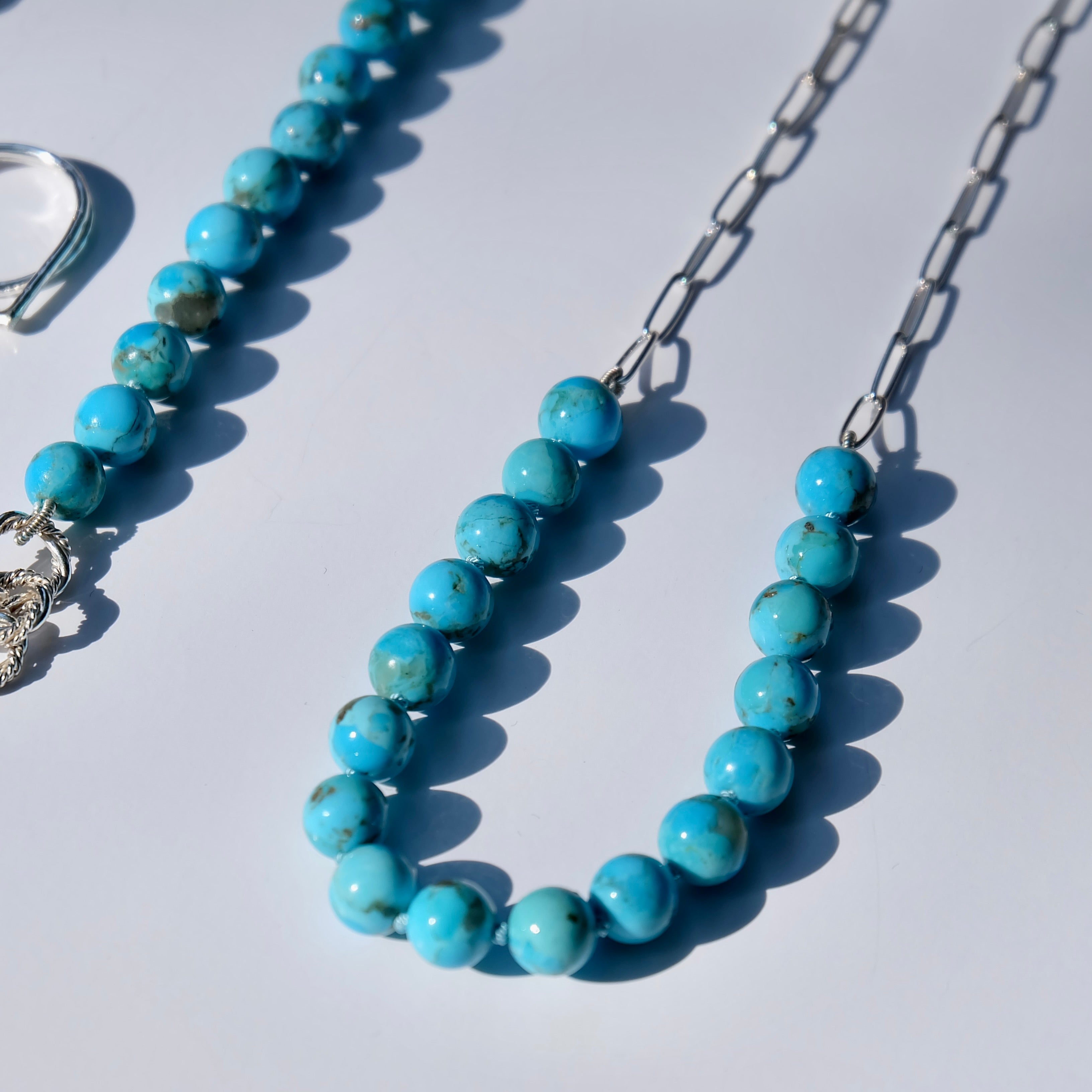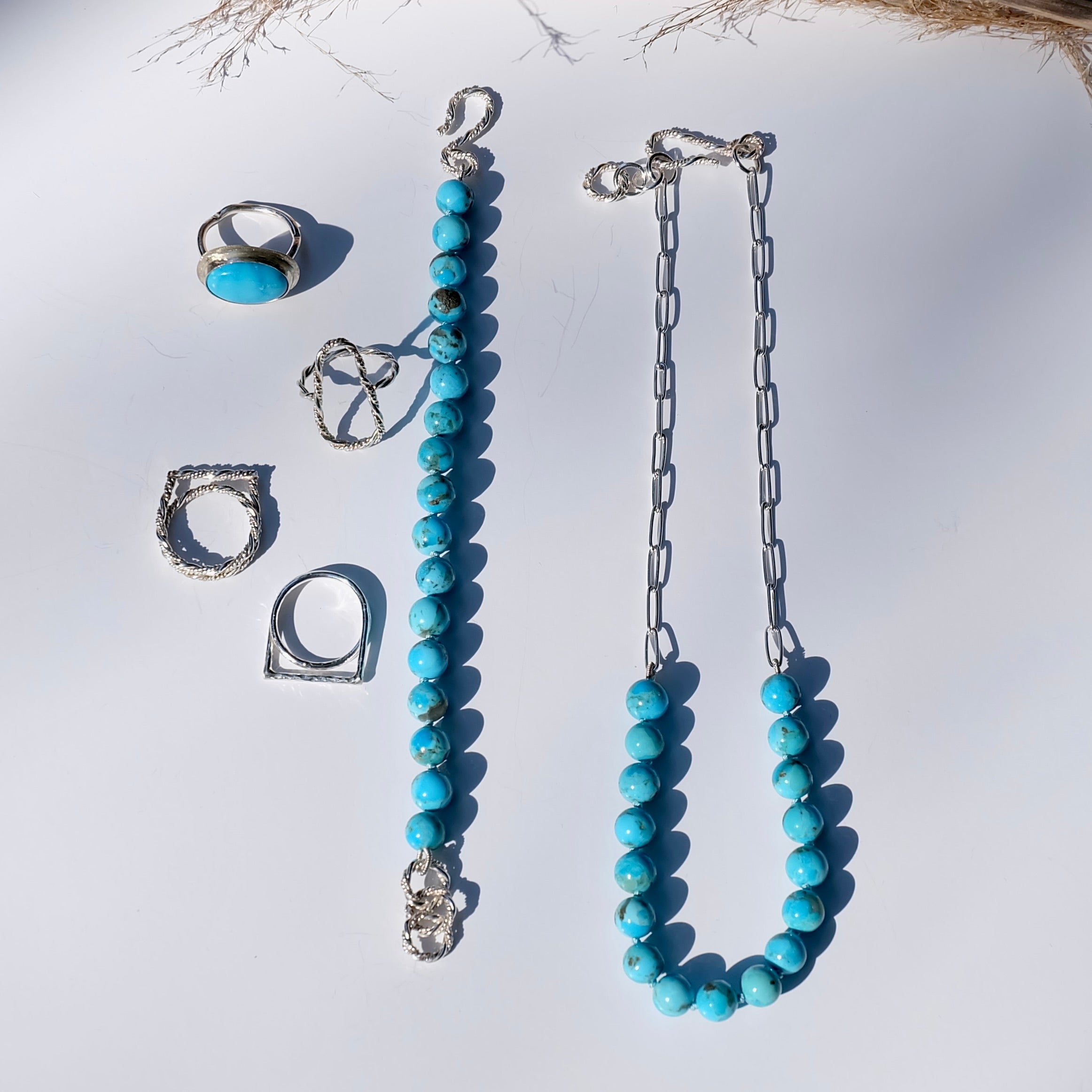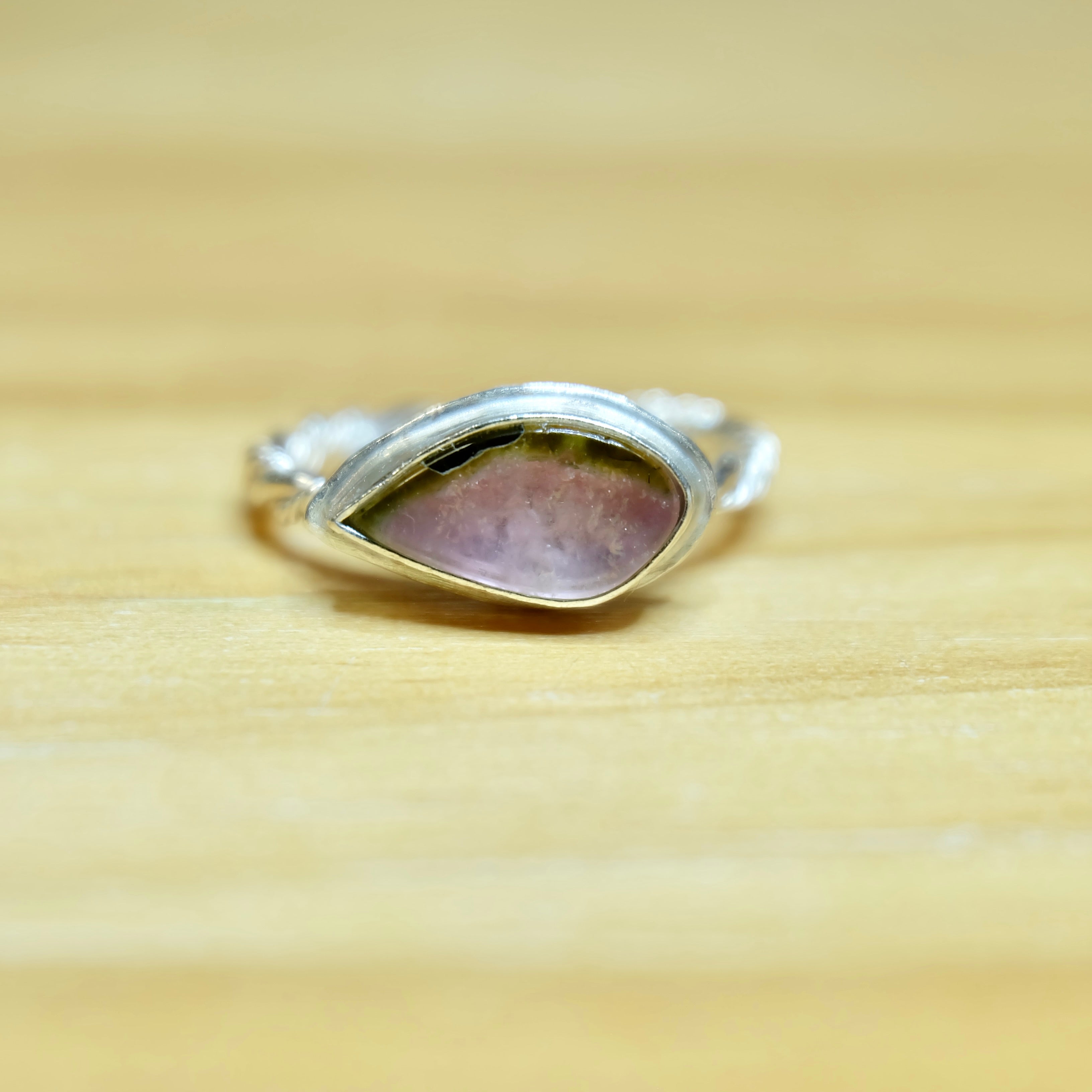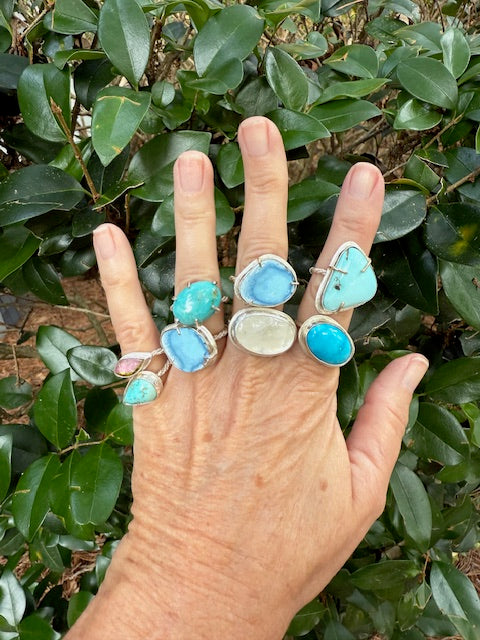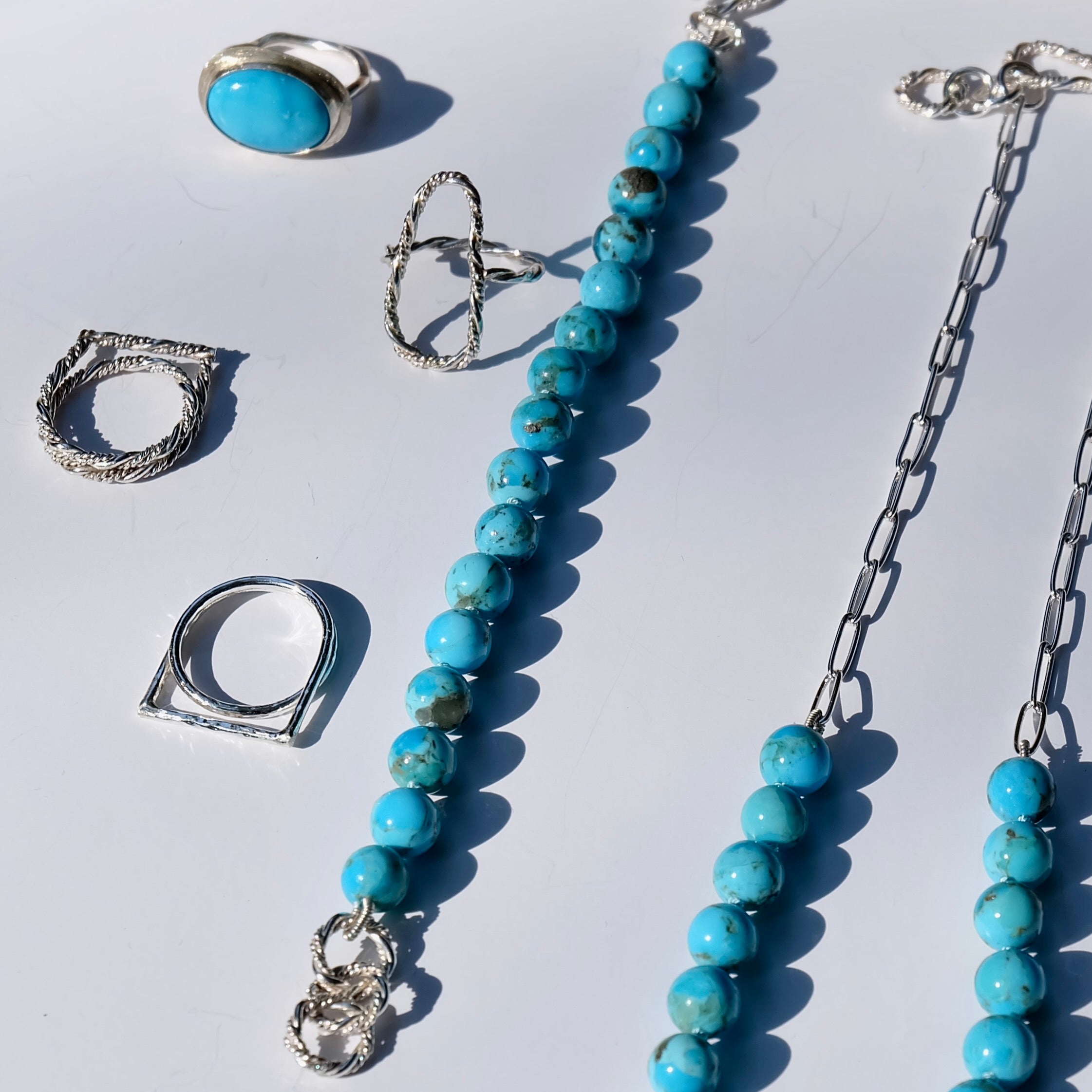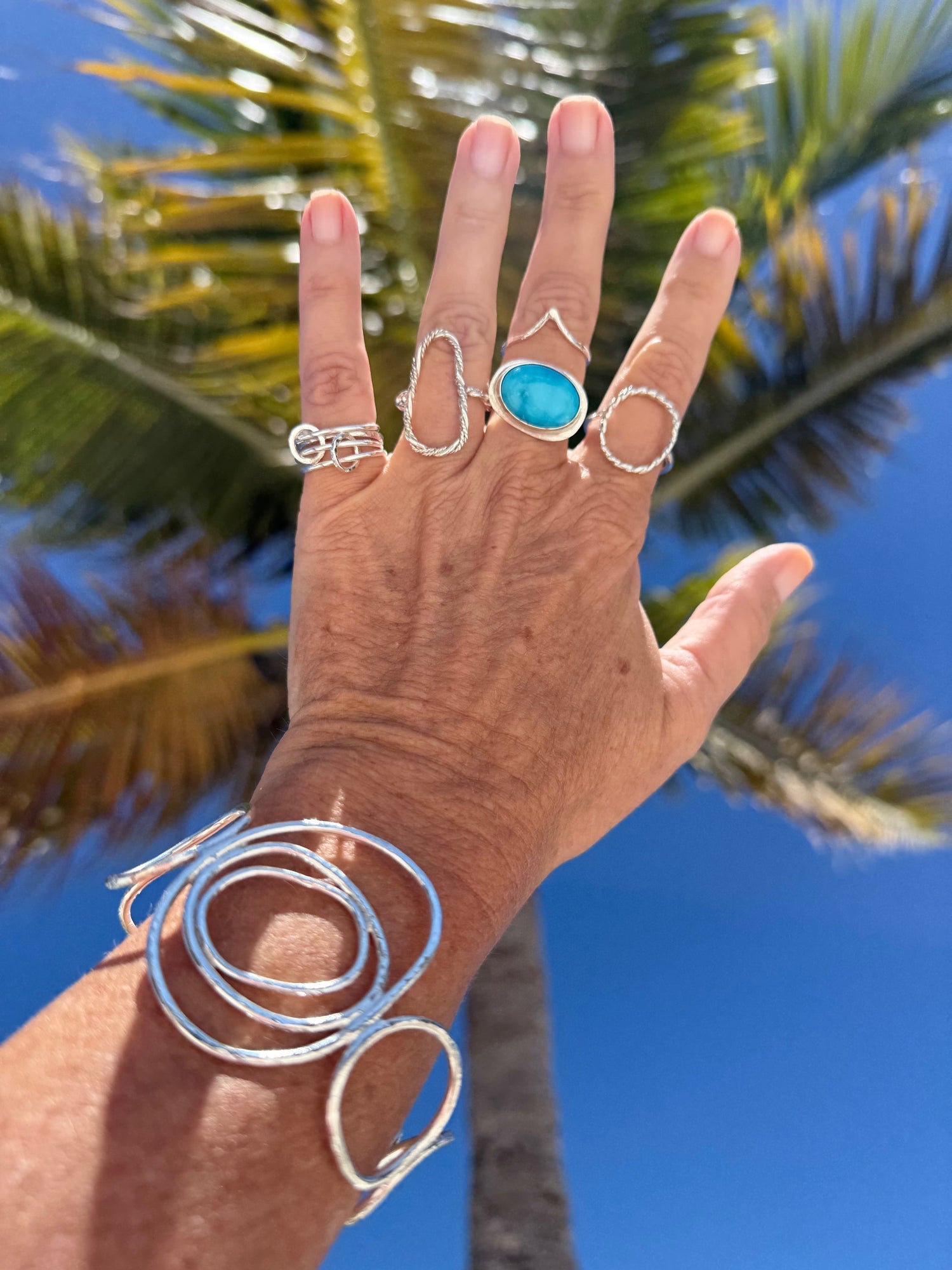Collection: Birthstone Jewelry

Shop Ready To Ship Birthstone Jewelry
-
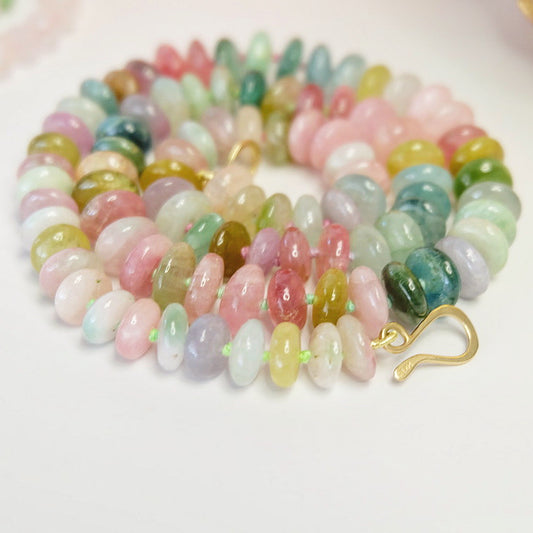

Watermelon Tourmaline Candy Necklace 14K Gold
5.0 / 5.0
(1) 1 total reviews
Regular price From $795.00 USDRegular price -

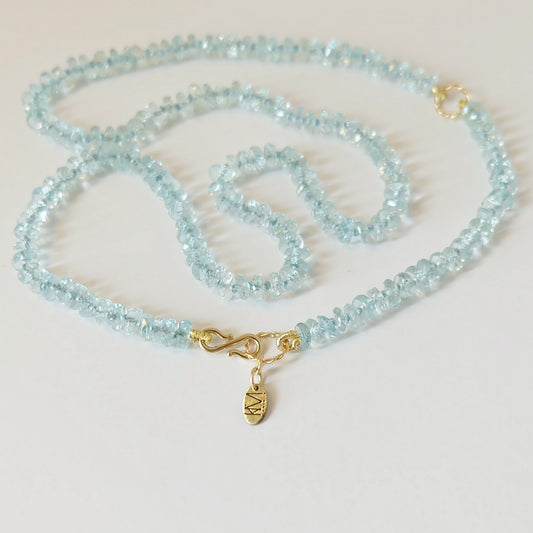
Aquamarine Candy Necklace 14K Gold
Regular price $600.00 USDRegular price -
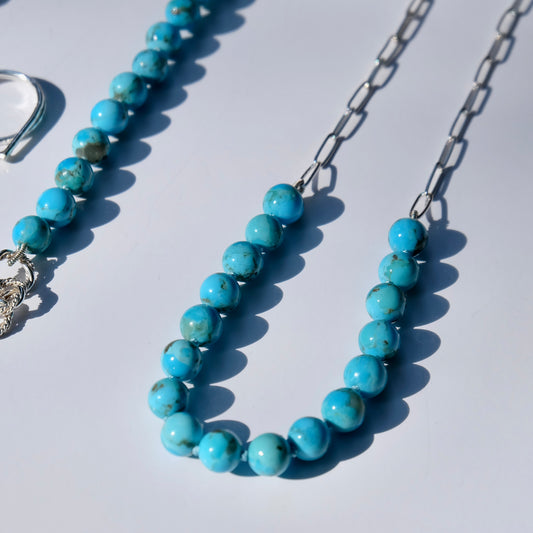
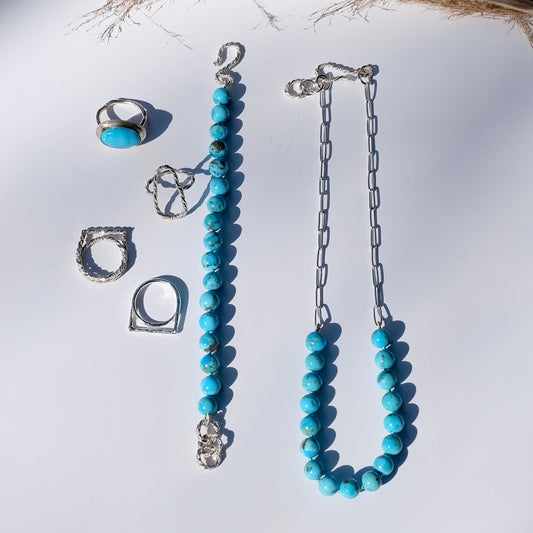
Kingman Turquoise Paperclip Necklace
5.0 / 5.0
(2) 2 total reviews
Regular price $300.00 USDRegular price -

 Sale
SaleWatermelon Tourmaline Ring
Regular price $75.00 USDRegular price$100.00 USDSale price $75.00 USDSale -
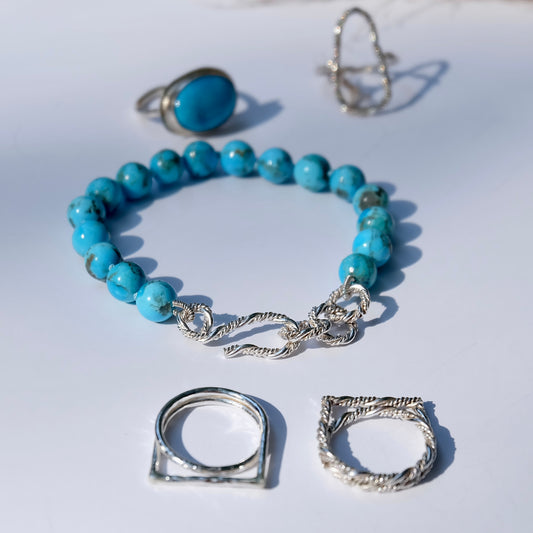
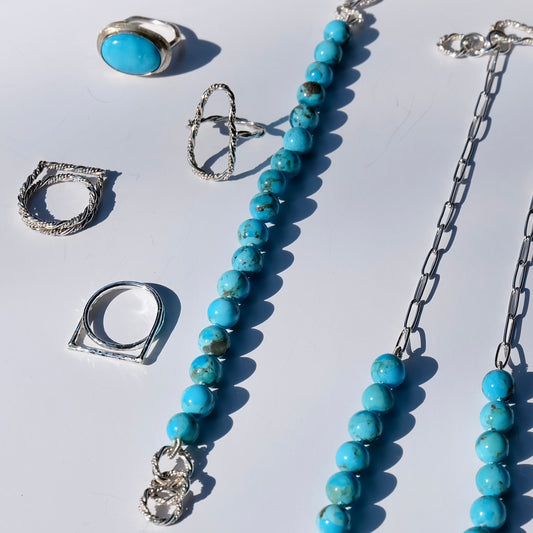
Turquoise Bead Bracelet
Regular price $175.00 USDRegular price -

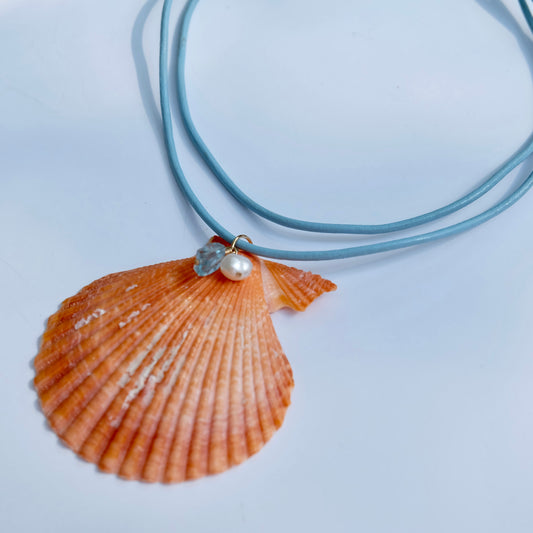
Sea Shell Pendant Necklace
Regular price $40.00 USDRegular price -
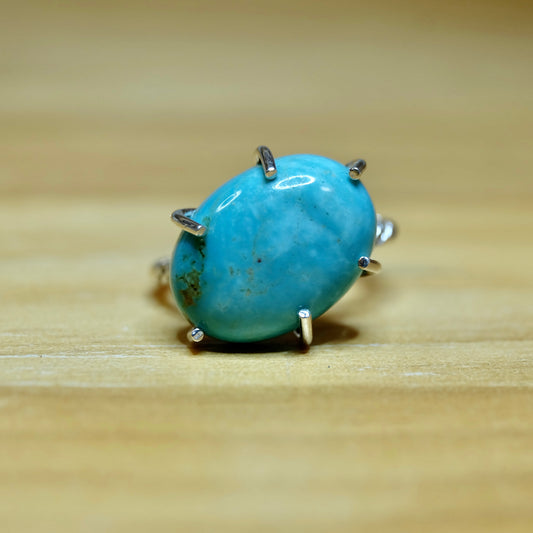
 Sale
SaleTurquoise Ring Sterling Silver
Regular price $115.00 USDRegular price$150.00 USDSale price $115.00 USDSale -
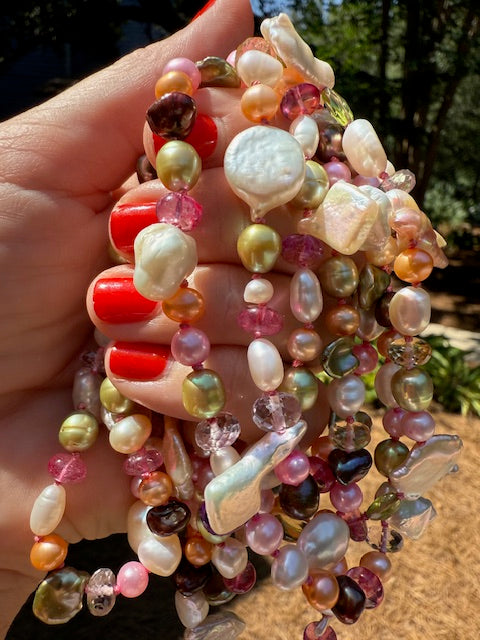
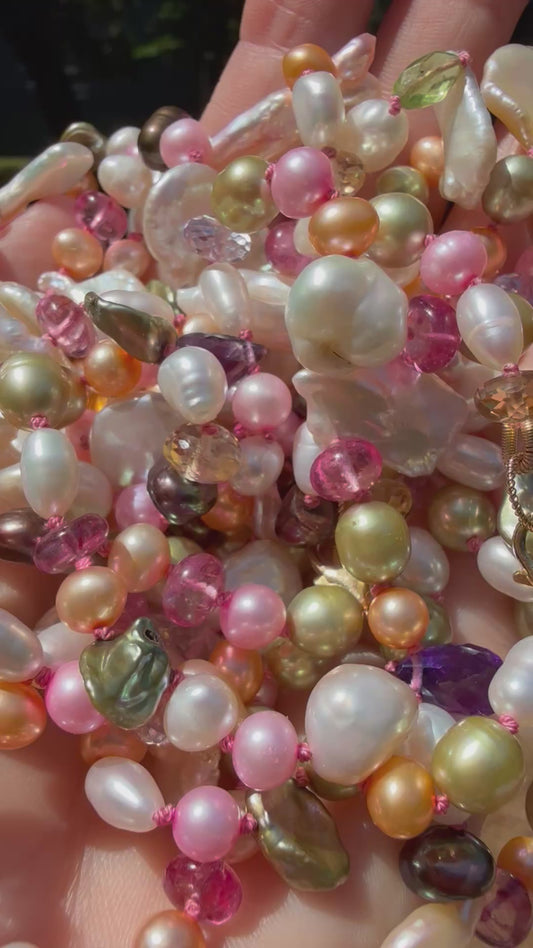
Candy Pearl Necklace
5.0 / 5.0
(1) 1 total reviews
Regular price $150.00 USDRegular price -

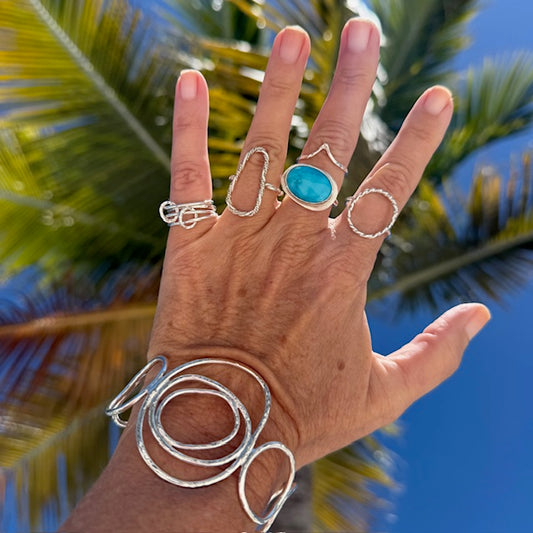
Oval Turquoise Ring
Regular price $150.00 USDRegular price -
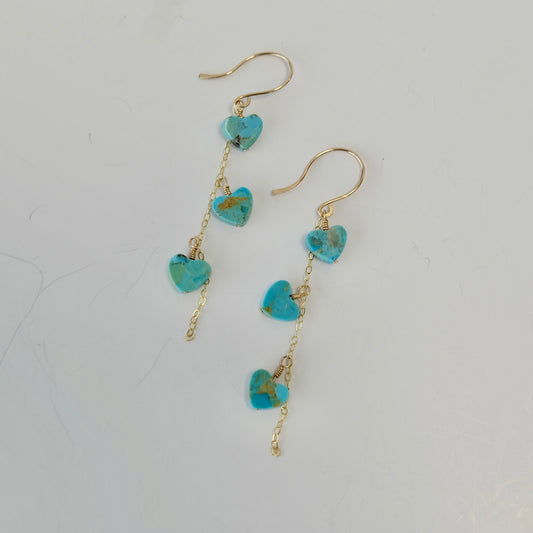

Turquoise Heart Earrings
Regular price From $75.00 USDRegular price -
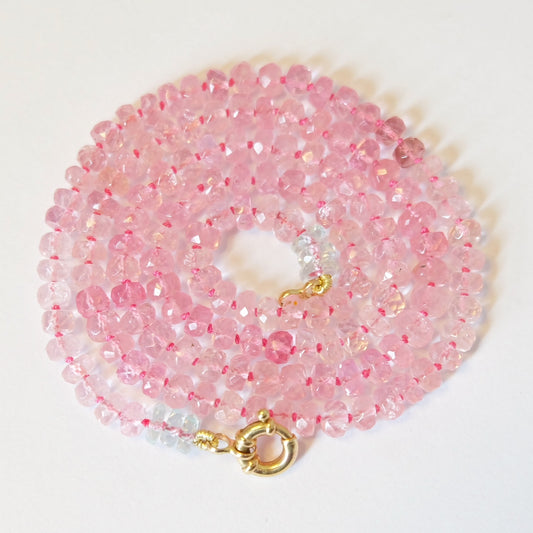
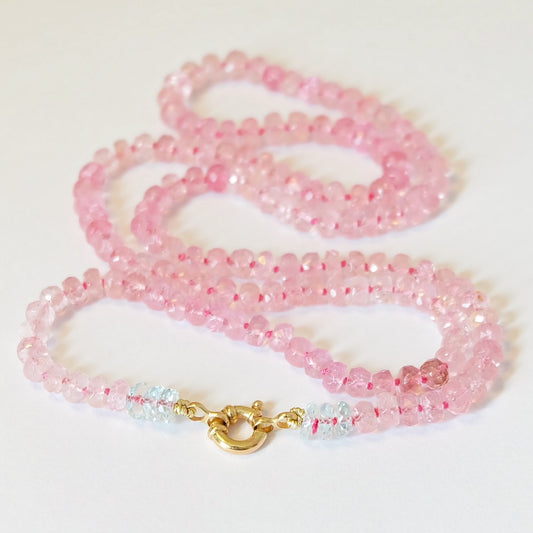
Pink Tourmaline Candy Necklace 14K Gold
Regular price $800.00 USDRegular price -

 Sale
SaleRuby Diamond Ring
Regular price $800.00 USDRegular price$1,300.00 USDSale price $800.00 USDSale -
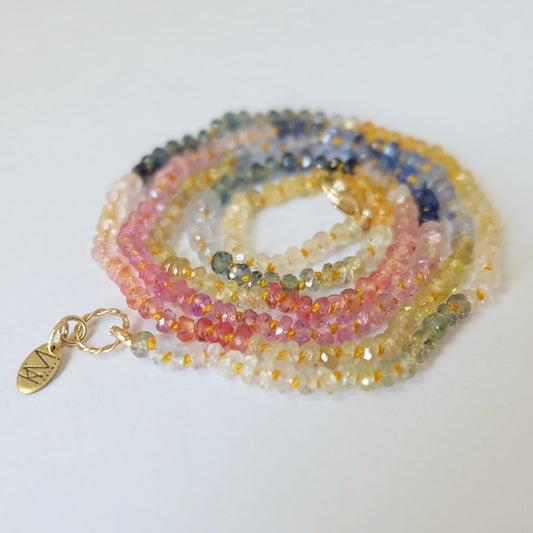
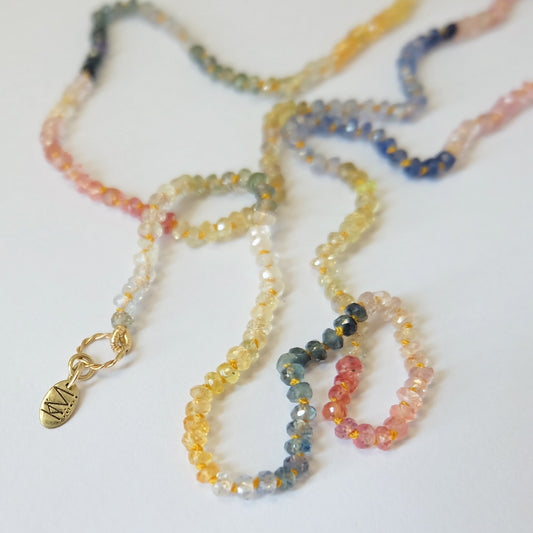
Sapphire Candy Necklace 14K Gold
Regular price $300.00 USDRegular price -
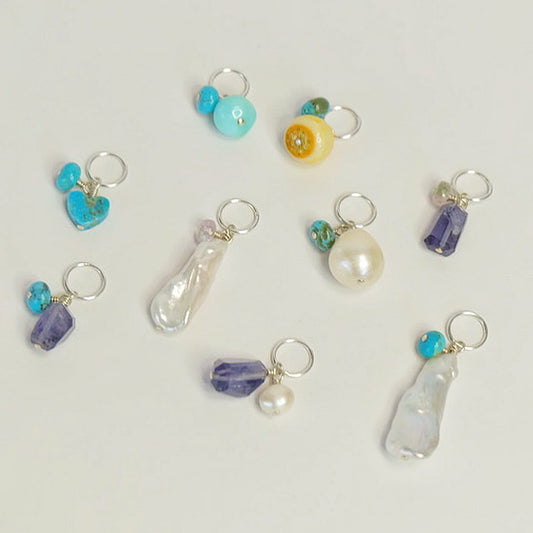
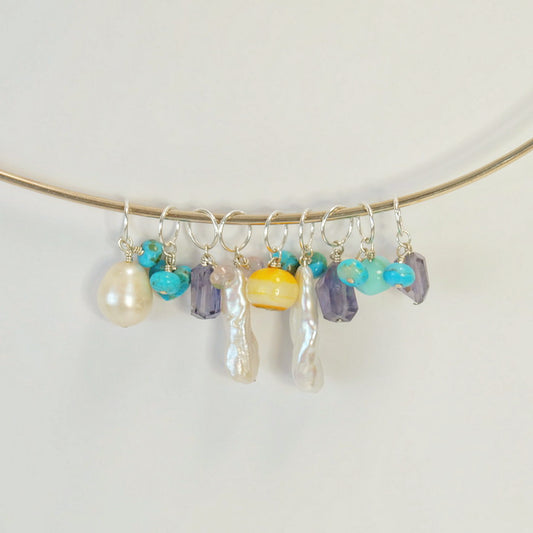
Sterling Silver Charms
5.0 / 5.0
(1) 1 total reviews
Regular price From $30.00 USDRegular price -
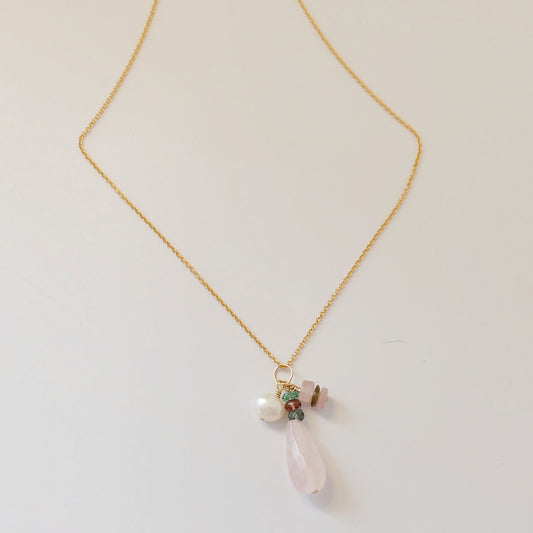
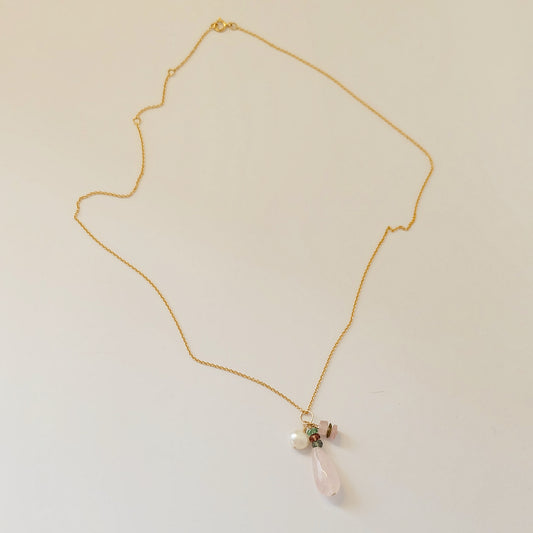
Rose Quartz & Tourmaline Gold Charm Necklace
Regular price $75.00 USDRegular price -
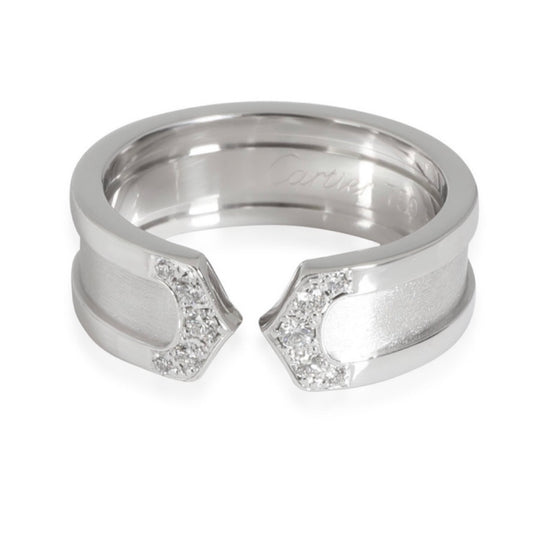
 Sale
SaleCartier Diamond Ring
Regular price $2,500.00 USDRegular price$5,250.00 USDSale price $2,500.00 USDSale -

 Sale
SaleAmethyst Necklace with Pearl Topaz Charms
Regular price $200.00 USDRegular price$250.00 USDSale price $200.00 USDSale -
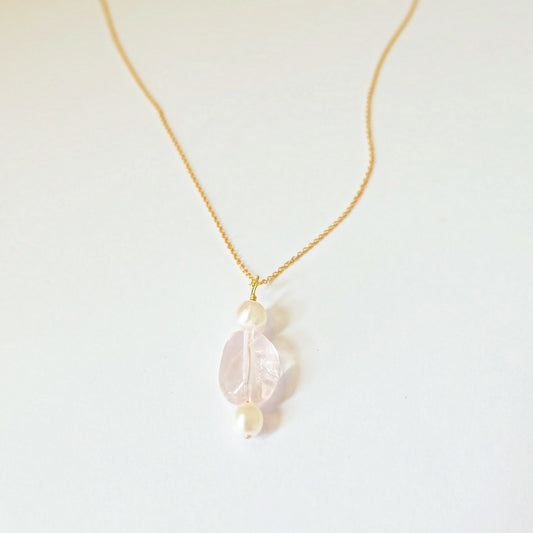
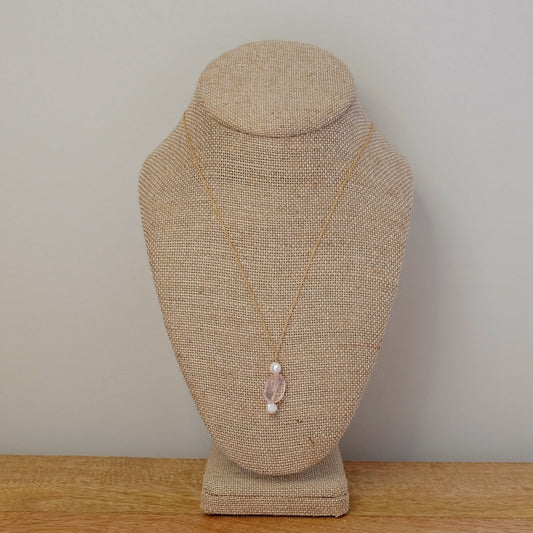
Morganite Pearl Charm Necklace
Regular price $75.00 USDRegular price -


Agate, Peruvian Opal Bead Bracelet
Regular price $65.00 USDRegular price -
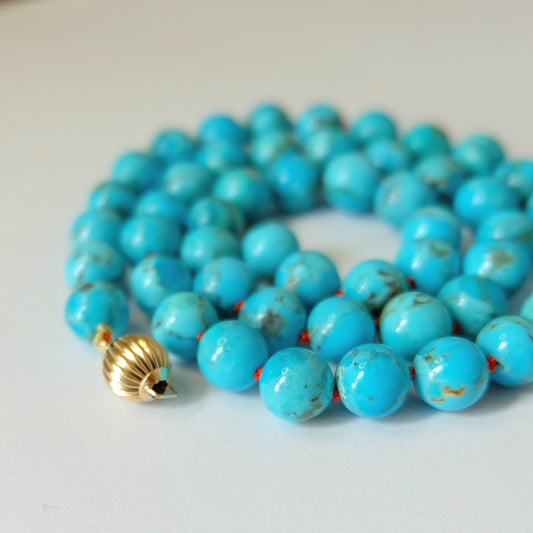

14K Gold Kingman Turquoise Necklace
Regular price $500.00 USDRegular price -
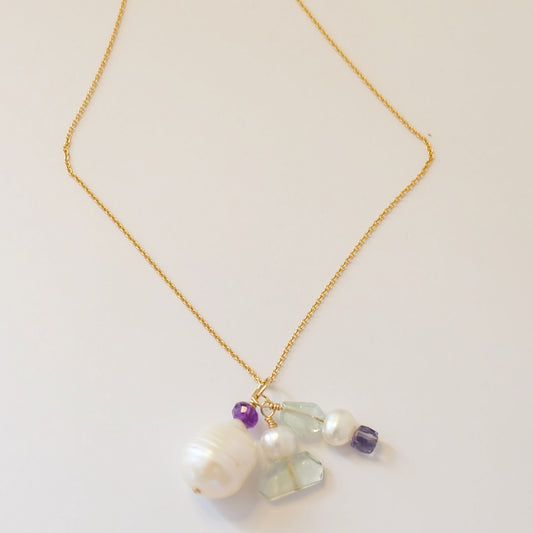

Pearl Amethyst Aquamarine Charm Necklace
Regular price $75.00 USDRegular price -


Freshwater Pearl Charm
Regular price $20.00 USDRegular price -
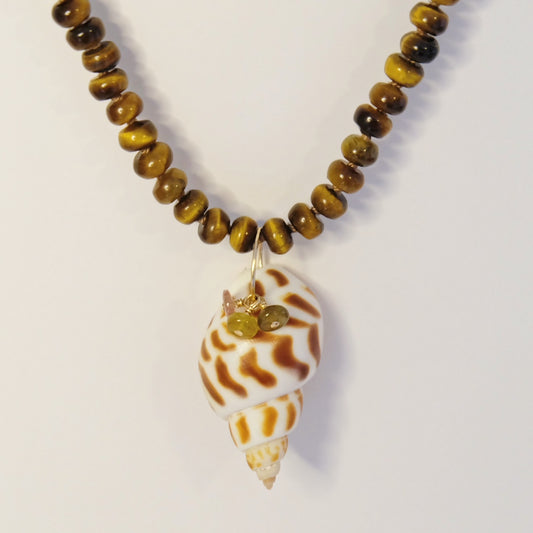

Tiger's Eye Seashell Charm Pendant
Regular price $150.00 USDRegular price -
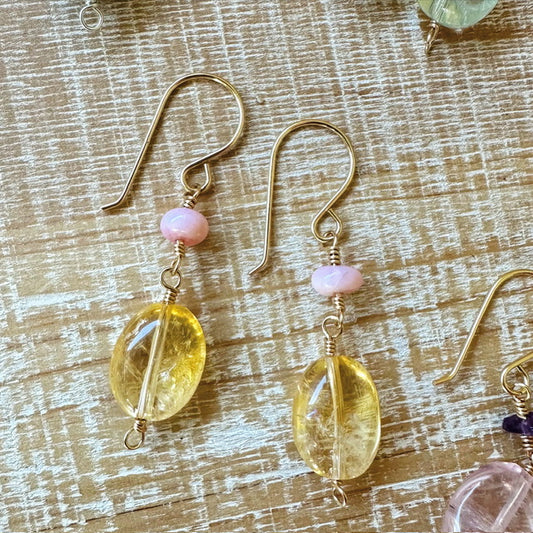
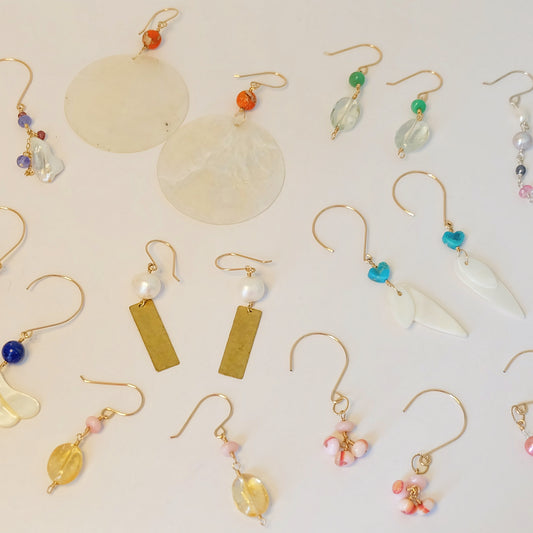
Citrine Pink Opal Dangle Earrings
Regular price $65.00 USDRegular price -
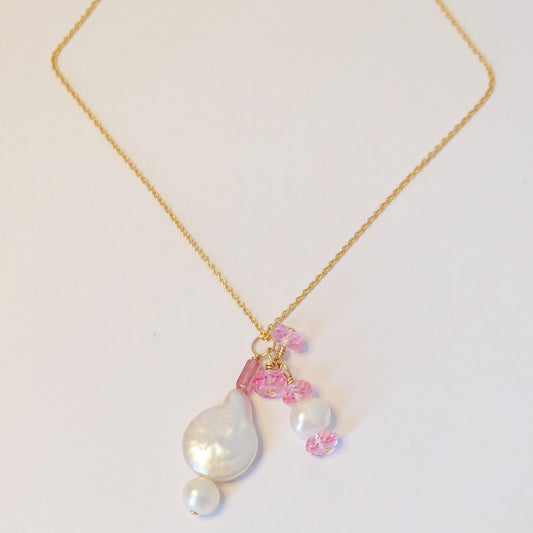
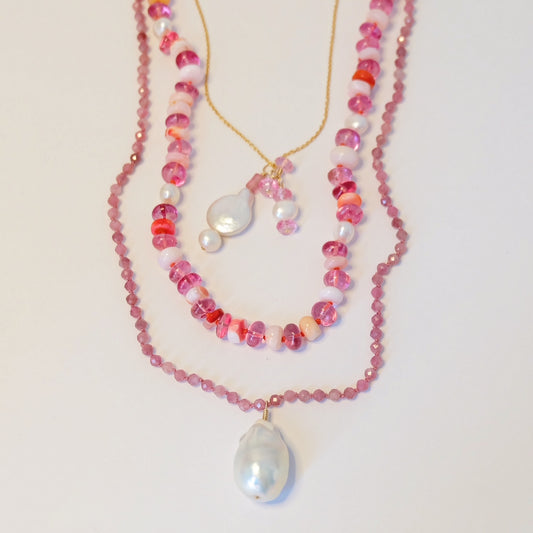
Pink Tourmaline Pearl Charm Necklace
Regular price $75.00 USDRegular price -
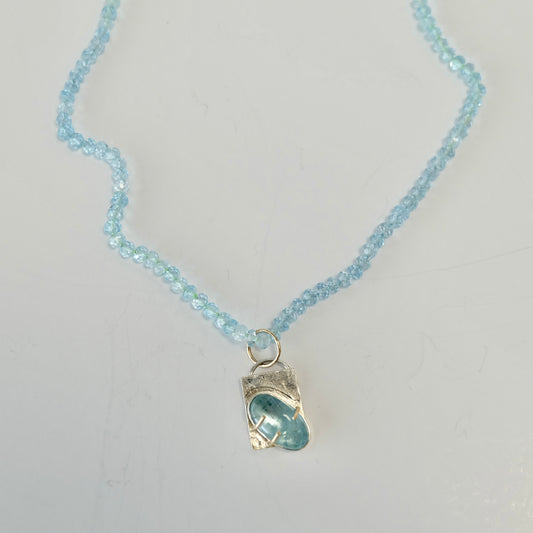
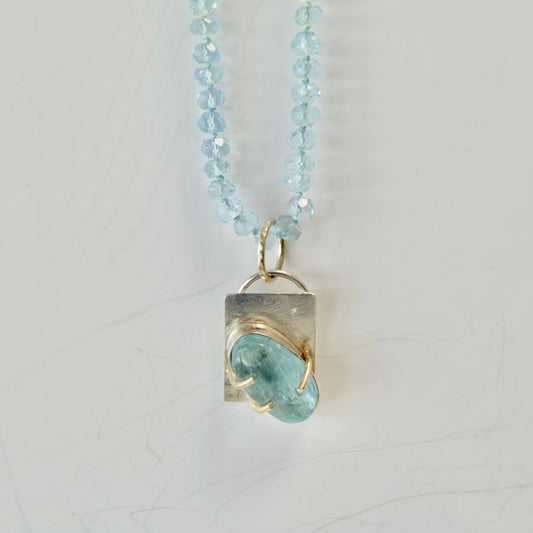
Aquamarine Charm Necklace 14K Gold
Regular price $800.00 USDRegular price -

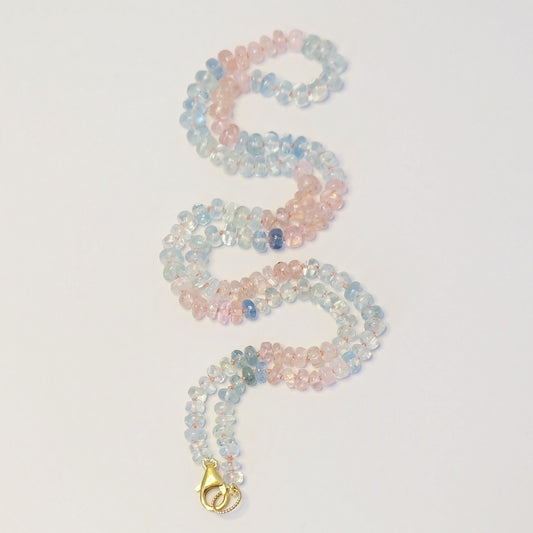
Aquamarine Rose Quartz Candy Necklace
Regular price $300.00 USDRegular price -
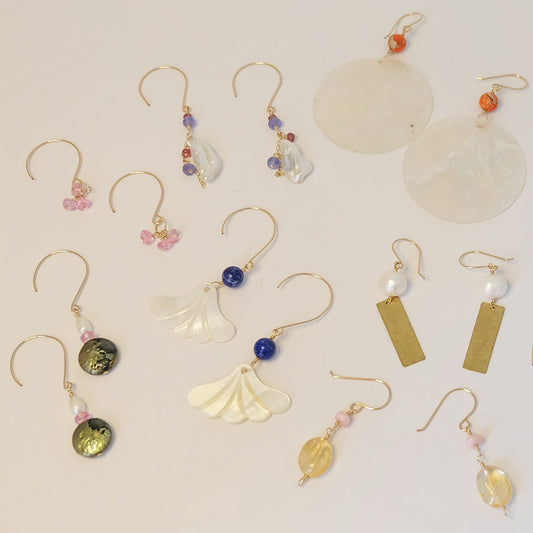
Biwa Pearl Earrings
Regular price $75.00 USDRegular price -
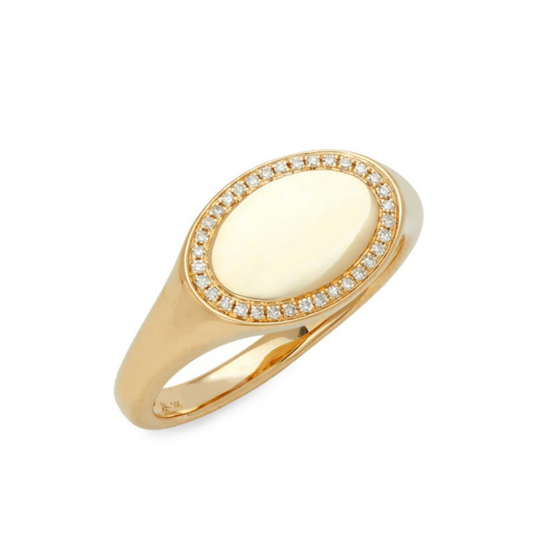
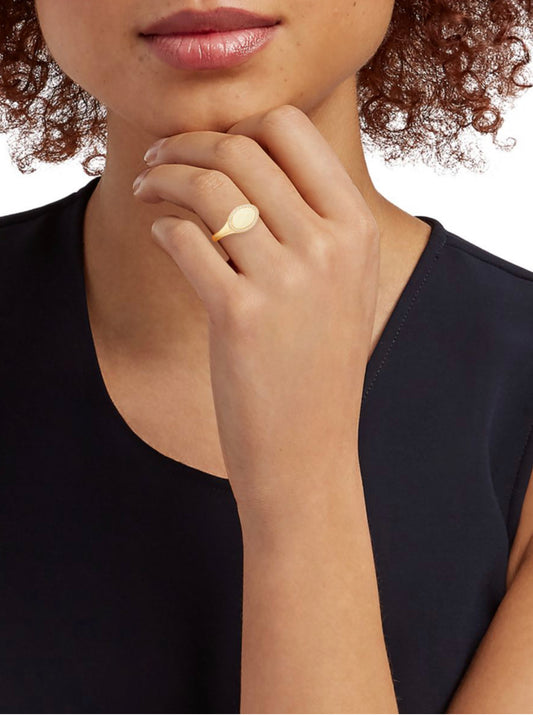 Sale
SaleDiamond Signet Ring
Regular price $650.00 USDRegular price$1,200.00 USDSale price $650.00 USDSale -
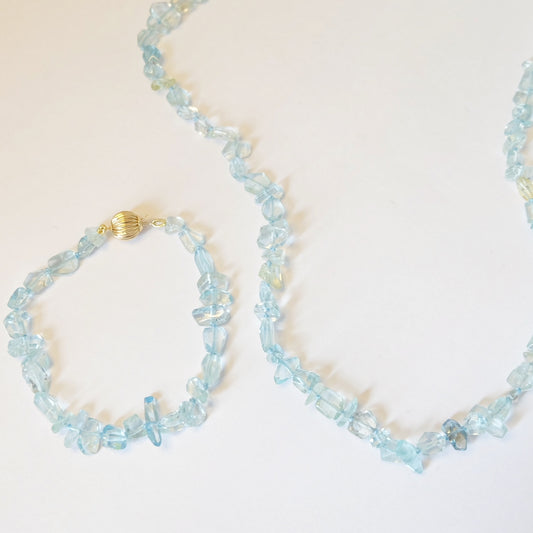

Aquamarine Tennis Bracelet 14K Gold
Regular price $200.00 USDRegular price -
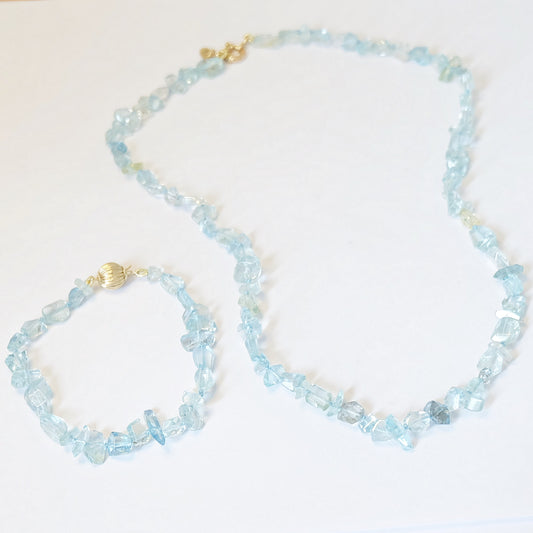
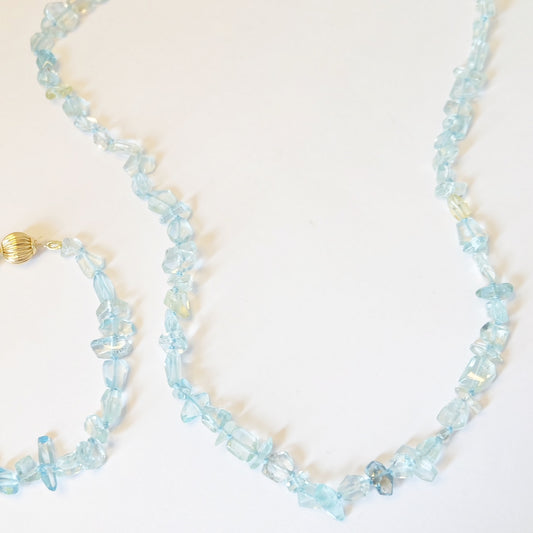
Aquamarine Tennis Necklace
Regular price $300.00 USDRegular price -
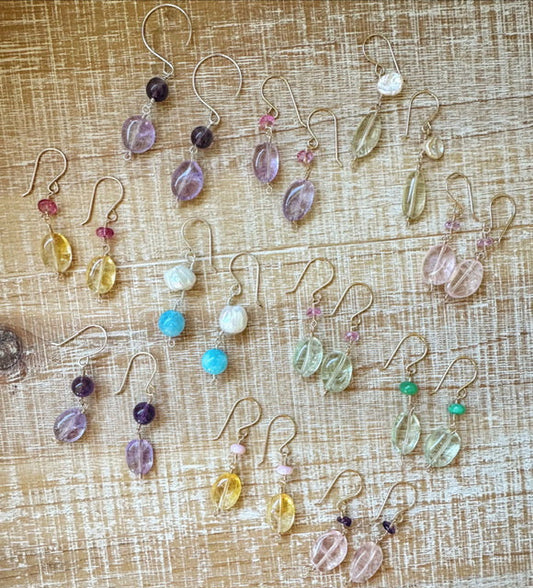

Gemstone Drop Earrings
Regular price $65.00 USDRegular price -

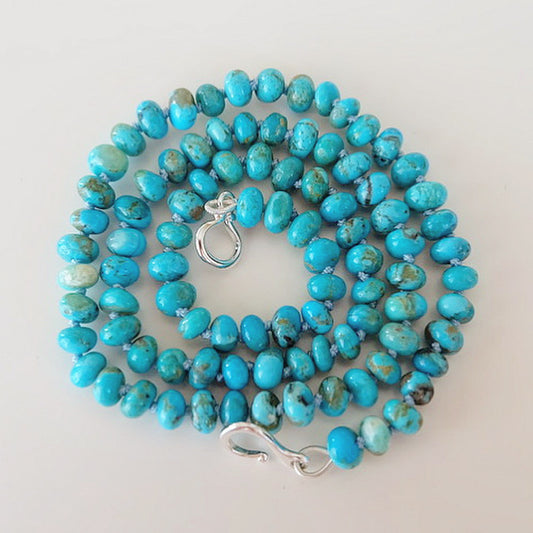
Turquoise Beaded Necklace
Regular price $250.00 USDRegular price -


14K Gold Biwa Pearl, Pink Topaz, Lapis Lazuli Necklace
Regular price $500.00 USDRegular price -
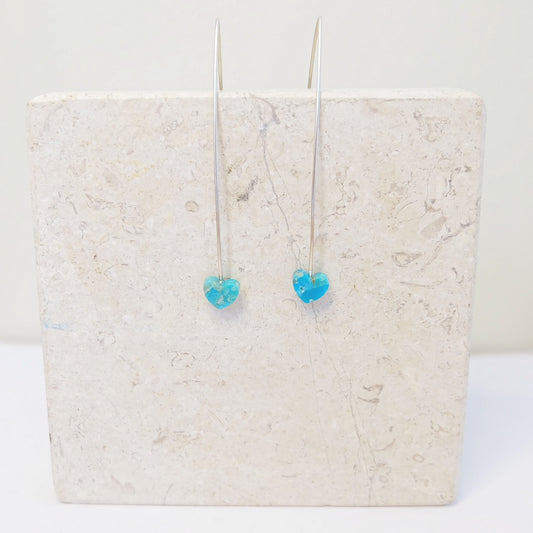

Turquoise Heart Silver Threader Earrings
Regular price $35.00 USDRegular price -
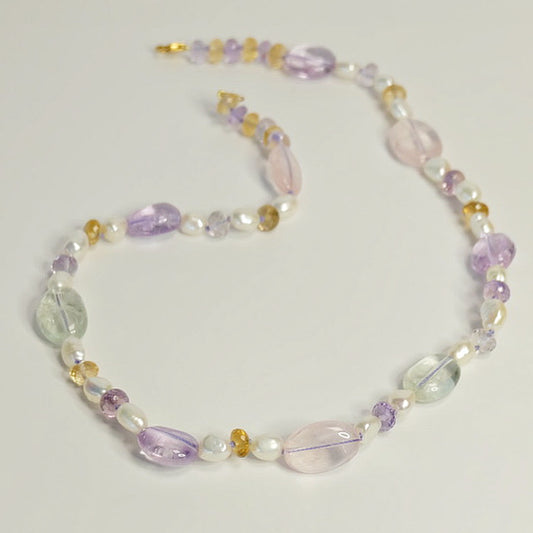
 Sale
SaleSummer Gemstone Candy Necklace
Regular price $200.00 USDRegular price$250.00 USDSale price $200.00 USDSale
Birthstone Jewelry Collection
Birthstone Jewelry Jewelry
Birthstone Jewelry Collection
Shop our birthstone jewelry collection featuring a variety of gemstones crafted with care from quality metals such as sterling silver and gold. Whether you are shopping for yourself, a mom, a mother in law, or a bestie, our pieces make the perfect gift to celebrate life’s special moments. Explore our stock to find unique styles that suit every person’s taste, including many designed especially with mom in mind.
Our of a kind piece is ready to ship today.
Birthstones For The Months
The concept of birthstones by month connects people to the rhythm of the calendar year and the meaning behind each stone. For many, a birthstone represents more than a date—it carries emotional value, ancestral ties, and even healing properties. Designers and collectors alike are drawn to the unique colors and characteristics that define each month’s gem. Birthstones make meaningful birthday gifts or personal talismans. They are beautiful, intimate pieces you can wear every day, perfect for gifting to mom or anyone special.
Explore our store to find the perfect piece that suits your style, whether it’s a simple birthstone necklace, a charm bracelet, or a signature ring. Each item is expertly crafted to highlight the unique beauty of the gemstone and metal.
January Birthstone – Garnet
A symbol of passion and strength, garnet’s deep red hue is bold and sophisticated. Garnet birthstone necklaces add a timeless touch to any collection and are a best gifts for someone born in January.
February Birthstone – Amethyst
With regal purple tones, amethyst is associated with clarity and inner peace. Amethyst rings and pendants bring a refined yet playful touch to your jewelry box. This stone is perfect for those born in February March, offering a unique blend of beauty and meaning.
March Birthstone – Aquamarine
Inspired by the ocean, aquamarine’s cool blue hues represent serenity and effortless elegance. A minimalist aquamarine necklace is a fresh, modern take on this birthstone and a cherished item in any jewelry collection.
April Birthstone – Diamond or White Topaz
Diamonds are a classic symbol of strength and brilliance, while white topaz jewelry offers a radiant alternative. A gold birthstone ring featuring either gemstone makes a luxurious statement and a lovely gift for a loved one.
May Birthstone – Emerald
Rich green emeralds symbolize renewal and prosperity. A handcrafted emerald necklace makes an eye-catching addition to any wardrobe and is a meaningful way to honor a May birthday.
June Birthstone – Pearl or Alexandrite
Pearls are timeless classics. Alexandrite jewelry changes color under different light, making it a unique and rare gemstone choice that adds a special touch to your collection. Explore our full range of Baroque Pearls.
July Birthstone – Ruby
The deep red glow of ruby represents passion and love. A ruby birthstone ring or pendant is a statement piece for any occasion and a great gift for someone born in July.
August Birthstone – Peridot
Fresh and vibrant, peridot’s golden-green hue is believed to bring positive energy. Stackable peridot rings add a modern twist to birthstone jewelry and can be combined with other charms for a personalized look.
September Birthstone – Sapphire
Blue sapphire is one of the most elegant and sought-after gems. A sapphire birthstone bracelet or layering necklace is effortlessly chic and a versatile addition to your jewelry box.
October Birthstone – Opal or Pink Tourmaline
Opal’s iridescent shimmer and pink tourmaline’s delicate hue make them standout choices for modern gemstone jewelry lovers. Both opal and tourmaline offer unique beauty to birthstone necklaces and rings.
November Birthstone – Citrine or Topaz
Citrine’s warm golden glow and topaz’s natural brilliance make them perfect for layering with minimalist birthstone necklaces or as standalone statement pieces.
December Birthstone – Blue Topaz, Tanzanite, or Turquoise
December birthstones include bright blue topaz, rich purple tanzanite, and earthy turquoise. They offer diverse options to suit any personal style and make thoughtful gifts for those born in December.
How To Choose The Perfect Birthstone Jewelry
Choosing birthstone jewelry is a personal journey. Consider the person’s birth month and sign, as some gemstones align with zodiac meanings, enhancing the jewelry’s symbolism. Whether selecting a birthstone necklace for mom, a charm bracelet for a friend, or a ring for yourself, think about style preferences and metal types like sterling silver or gold. Our store offers a variety of styles to create a unique piece that reflects individual personality and life milestones.
Account Management and Shopping Tips
Create an account to save your favorite items, track orders, and enjoy a seamless shopping experience. If you need to reset your password or close your account, our customer service team is ready to assist you promptly. Browsing is easy and secure, ensuring you find the perfect birthstone jewelry every time.
Find Your Perfect Birthstone Jewelry
Ready to discover a piece that speaks to you? Our birthstone jewelry collection brings together intentional design, expert craftsmanship, and meaningful gems. Create something custom or choose a ready-to-wear piece. Let your birthstone jewelry reflect who you are and what matters most.
Explore our category page to view a wide selection of necklaces, rings, bracelets, and charms crafted from high-quality metals like sterling silver and gold. Whether you are looking for a simple everyday piece or a signature item to mark a special occasion, you will find the perfect gift for yourself, your mom, or a loved one.
Celebrate your birth month, your family, your friends, and the special people in your life with birthstone jewelry that carries meaning and beauty. Shop now and find the perfect piece to cherish for years to come.
Explore More Jewelry You'll Love
From statement rings to candy-colored gems — explore every corner of our collection.
Our Picks For You
-
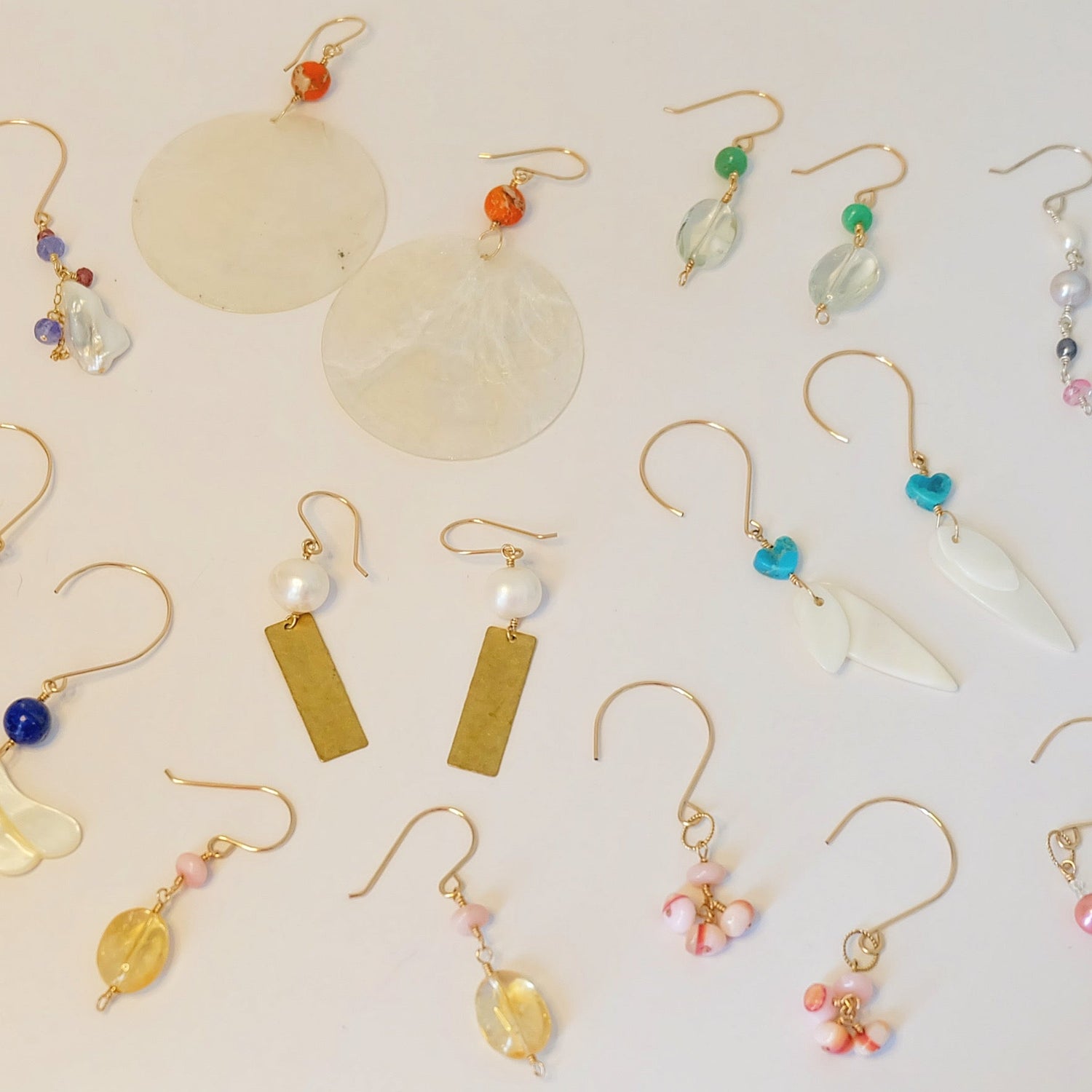
Dangle Earrings
Dangle Drop Earring Collection – Ethically Sourced & Handcrafted Shop handcrafted dangle...
-
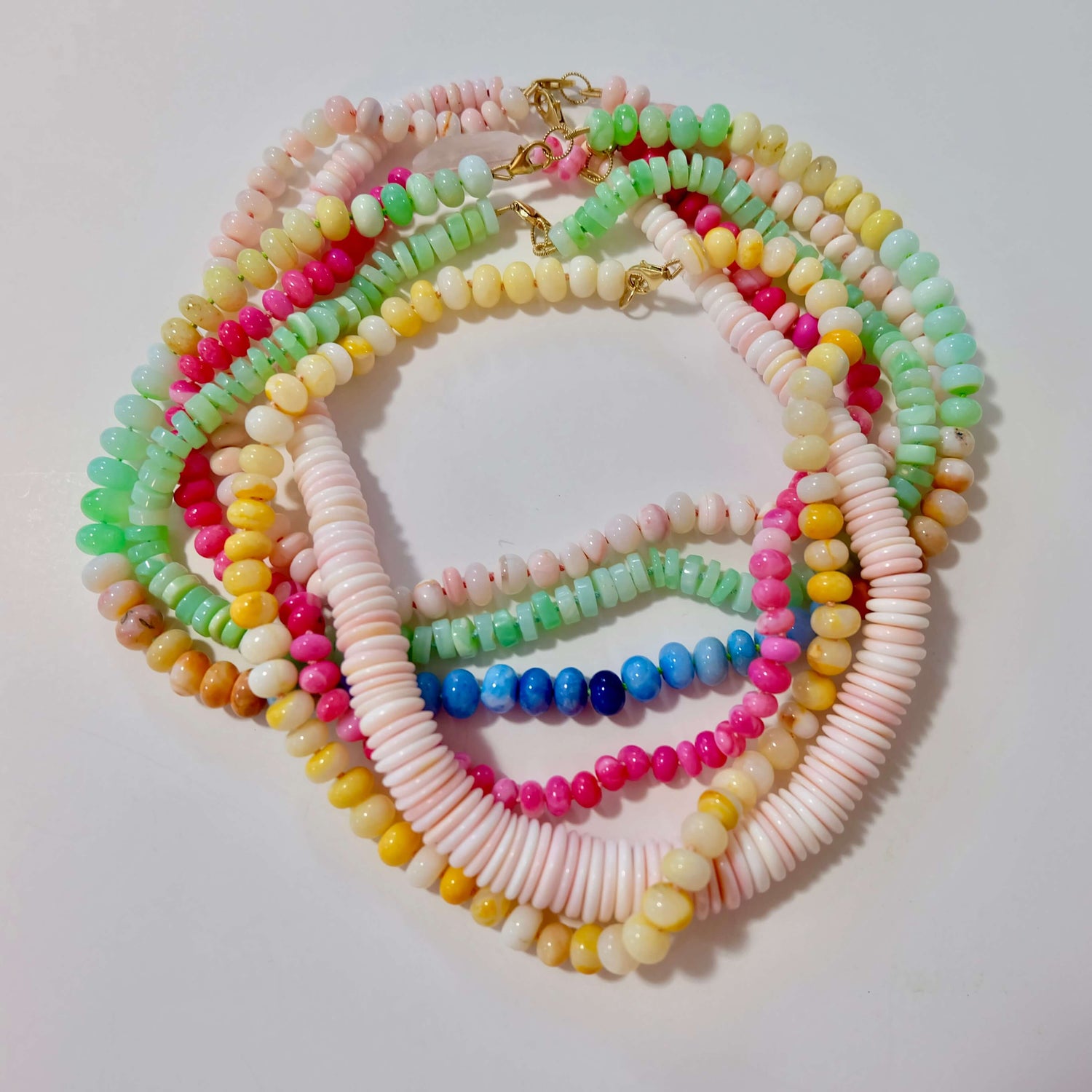
Candy Necklaces
Playful Nostalgia Meets Modern Elegance Shop candy necklaces in our handcrafted collection....
-
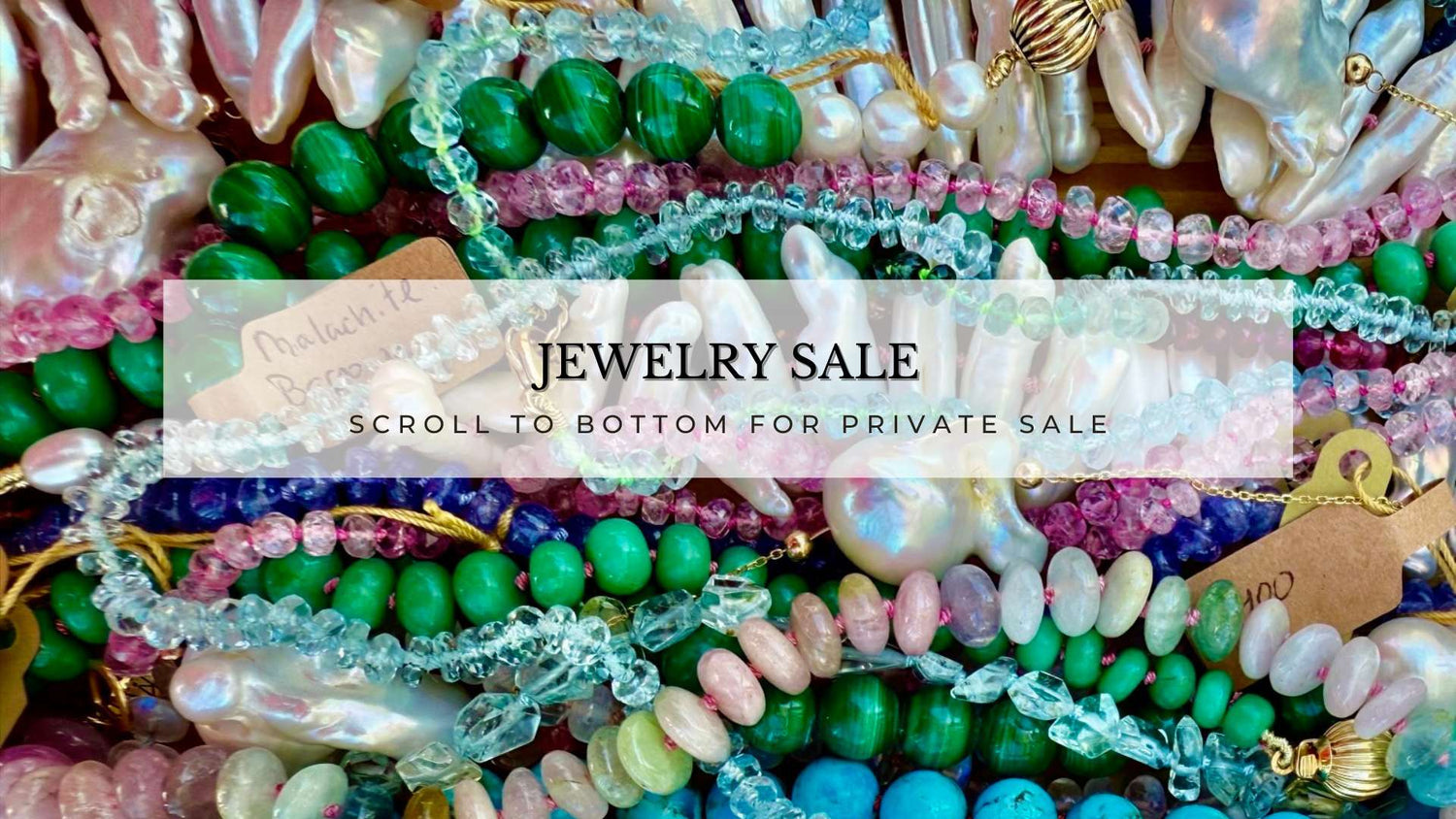
Jewelry Sale
Explore our Sale Jewelry Shop our exclusive jewelry sale, including a curated...
Let customers speak for us
from 23 reviewsWife LOVED this!!!! We saw her at a local art fair in Islamorada while on vacation for our anniversary. My wife LOVED this necklace. I picked up on her hints and contacted Karen the owner after we got back to the hotel. Wouldn't ya know it but the necklace was sold right after we left. Karen said she still had an extra strand though and not only custom made another necklace - she personally delivered it while we were sitting down for breakfast at Cheeca the next morning!! I've never encountered such amazing customer service before. Thanks for making our 25 anniversary even more special.

Absolutely love my sterling silver and sugilite necklace! It was personally delivered to my home, which made the experience feel extra special. The customer service was outstanding, and every piece I purchased is just beautiful. Couldn’t be happier!

I fell in love with the seashell charm necklace I bought, so I couldn’t resist ordering two more—one for myself and one for my daughter. The color is gorgeous and the length is just right.

I recently bought a seashell charm necklace and loved it so much that I came back for two more—one for myself and one for my daughter. The length and color are just perfect!"

LOVEEEEEE the rainbow silk!!

So colorful and perfect length.

Such a cute idea. Fits easily on my chain.

Perfect color and length. Made very well.

First customer here!! I initially saw her at our local art walk in Islamorada and quickly realized the quality of her pieces. I've purchased several 14K gold necklaces but wanted to switch things up with some mixed metals. This Kingman turquoise is more lovely in person that it was online. Can't wait for her to come back to Islamorada!!

Quickly becoming a loyal fan!! Now my third necklace. I had one custom made and then this for fun. So summery and perfect with everything.

Gorgeous!!! Love everything about this designer dupe - especially the price.

I commissioned a 14K gold watermelon tourmaline necklace. It was knotted on perfectly on matching rainbow silk with a large connector clasp. Officially my favorite piece.

Oh my stars. This necklace is even more amazing in person than online. SO glad I snagged her!!!

Love the color !! It is a bit shorter than others I own which makes it easy to wear multiple necklaces. Great fast shipping !

This necklace is so lovely. The clear deep color and faceted quality of the stones, the careful little knots between them—you can see care was taken making the piece. The packaging was also very nice, communication excellent, and delivery prompt. Overall, I’m very happy with this purchase. I look forward to wearing it.

Jewelry News You Can Use
-
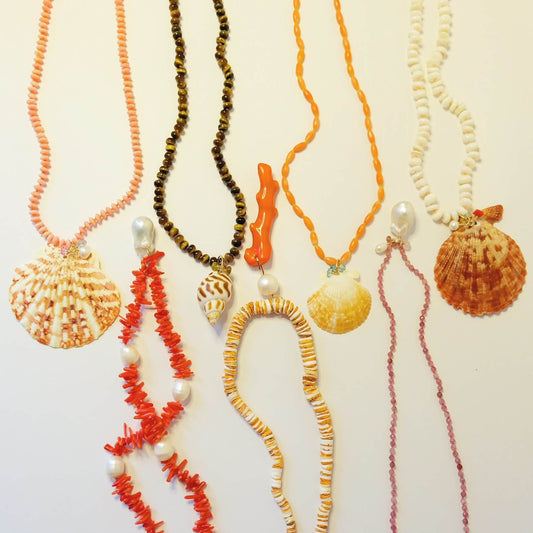
6 Must-Have Jewelry Pieces from the Florida Keys
Carry the Spirit of the Florida Keys with You The Florida Keys aren’t just a destination—they’re a state of mind. Imagine carrying a piece of that sunlit paradise wherever you...
6 Must-Have Jewelry Pieces from the Florida Keys
Carry the Spirit of the Florida Keys with You The Florida Keys aren’t just a destination—they’re a state of mind. Imagine carrying a piece of that sunlit paradise wherever you...
-

Holiday Gift Guide
Thoughtful Gifts, Beautifully Made Give jewelry that’s as meaningful as it is beautiful. Our holiday gift guide jewelry collection is handcrafted in small batches using ethically sourced gold, silver, pearls,...
Holiday Gift Guide
Thoughtful Gifts, Beautifully Made Give jewelry that’s as meaningful as it is beautiful. Our holiday gift guide jewelry collection is handcrafted in small batches using ethically sourced gold, silver, pearls,...
-
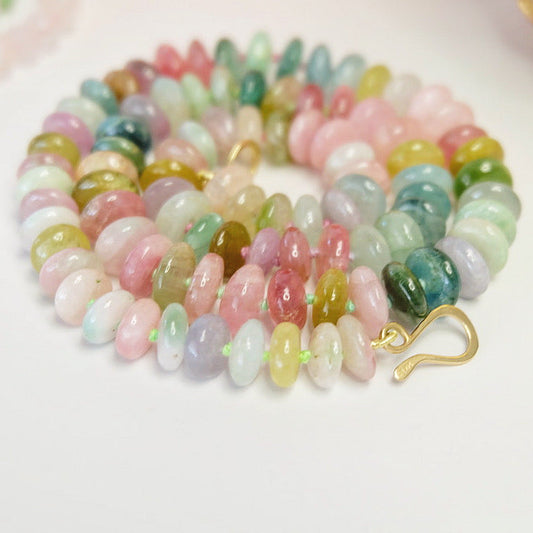
The Sweet History of Candy Necklaces: A Nostalg...
Few accessories bring back childhood memories quite like the candy necklace. A playful mix of fashion and confection, this beloved treat has remained a favorite across generations. Whether worn for...
The Sweet History of Candy Necklaces: A Nostalg...
Few accessories bring back childhood memories quite like the candy necklace. A playful mix of fashion and confection, this beloved treat has remained a favorite across generations. Whether worn for...






